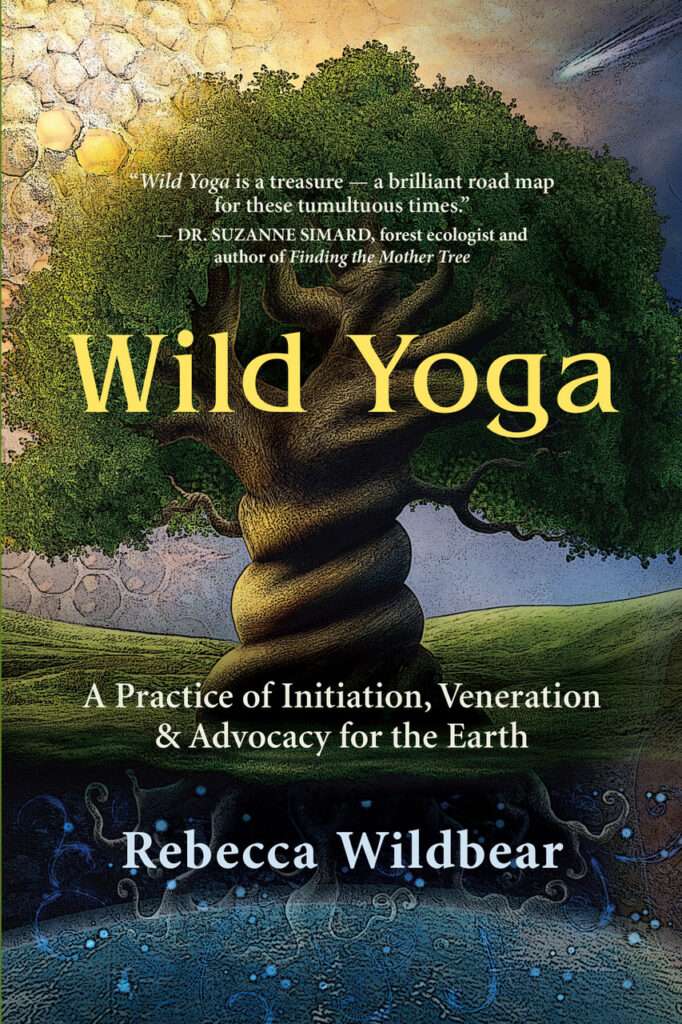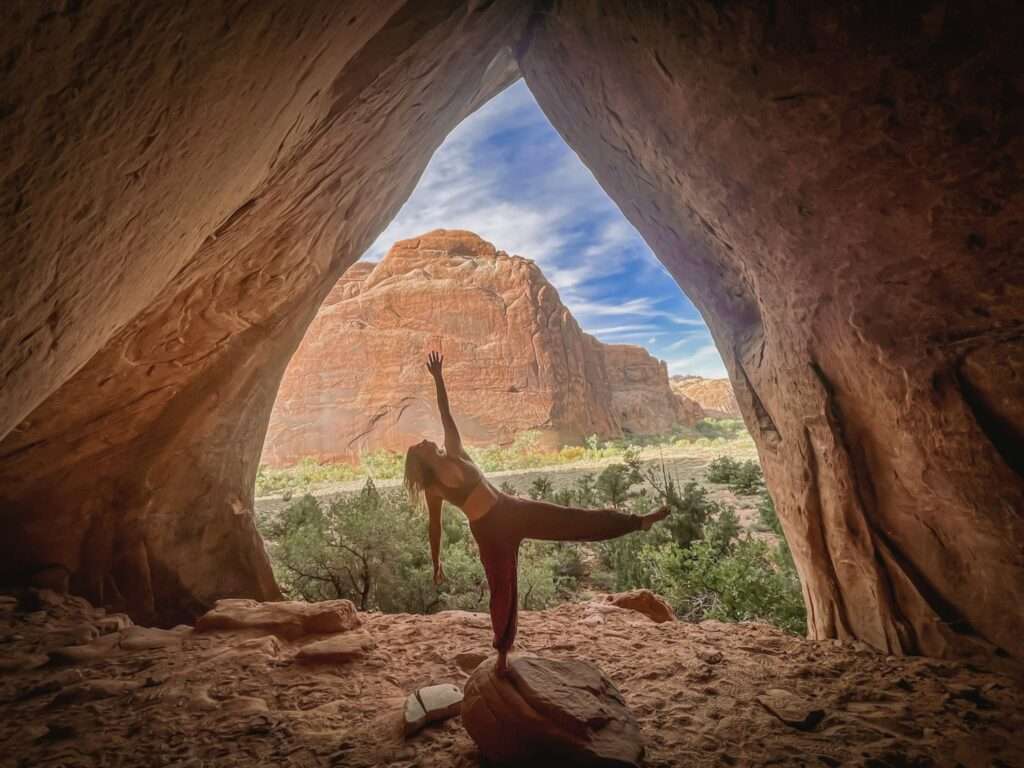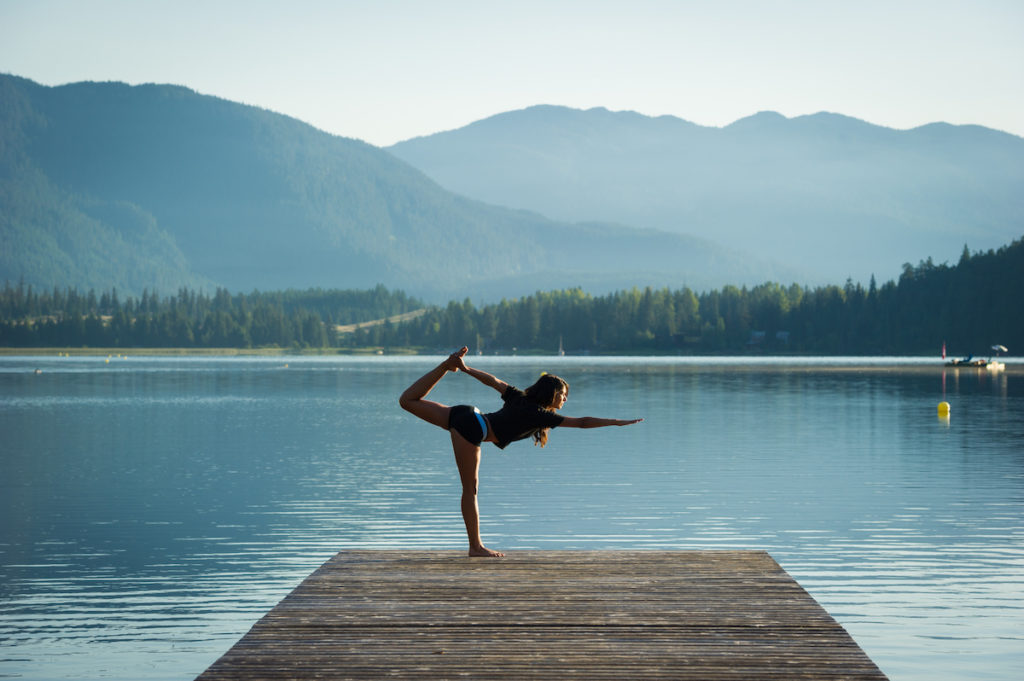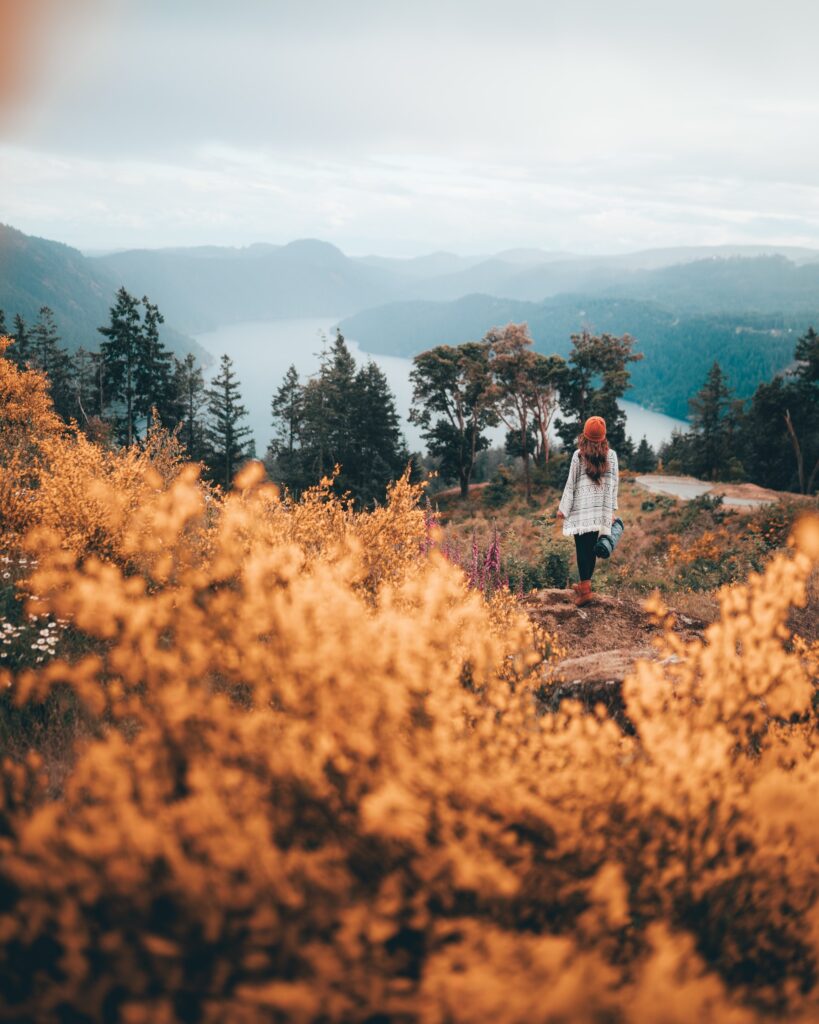Longing to embark on a transformative journey and embrace a life of embodied wisdom and service to the natural world? Pick up a copy of Wild Yoga: A Practice of Initiation, Veneration & Advocacy for the Earth, a new book by visionary author Rebecca Wildbear, for inspiration and real-life, immersive wisdom.
Feel the call of the wild as you dive headfirst into a practice that resonates with your deepest desires and opens the floodgates of your innate potential. Rebecca weaves a tapestry of mystical teachings, inviting you to unleash the untamed spirit within your very core.
She beautifully highlights the significance of being in tune with our bodies and aligning ourselves with the intelligence that transcends our minds.


Nature has the power to inspire our movements, awaken our instincts, initiate us into our soul’s purpose, and guide us in caring for all forms of life. With simple movements, accessible to beginners and experienced yogis alike, Wild Yoga provides an opportunity to live from the depths of the soul.
Wild Yoga is divided into three parts, each with a distinct focus:
- Part 1 encourages readers to embrace their instinctual nature, embrace their fierce qualities, immerse themselves in the love of trees, and listen attentively to their dreams.
- In Part 2, Rebecca invites readers to explore the mysteries of their loves and grief, venture into the darkness, and be rejuvenated by the life force of the living planet.
- Part 3 guides readers to connect with their muse, dream for the betterment of the world, and become protectors of wild places.
Each chapter of Wild Yoga concludes with a yoga pose that complements the theme, accompanied by beautiful, nurturing illustrations by Sarah E. Brooks that aid significantly in visualizing the poses.
As you delve deeper into the book’s wisdom, you’ll find yourself living with more purpose, advocating for the preservation of wild places, and awakening your muse to dream a better world into existence.
By sharing her personal experiences and those of her clients, Rebecca authentically demonstrates how readers can meet their bodies and emotions where they are, including moments of grief, trauma, and vulnerability. She encourages them to attune themselves to the natural world. Trees become vessels of love, dreams serve as whispers from the divine, and darkness reveals hidden truths waiting to be unveiled.
“Marrying the healing practice of yoga with reverence for nature,” Rebecca creates a synergy that sparks curiosity and urges individuals to explore the depths of their dreams and the enigmatic aspects of life.
By cultivating such awareness, readers can grow their capacities to live in harmony with the Earth, recognizing that their well-being and the wellbeing of the planet are inherently intertwined. The book underscores the importance of living one’s purpose and advocating for the natural world, which is dependent on individuals who can honour and protect it.
Wild Yoga not only offers teachings and practices but also weaves in captivating stories, allowing readers to embark on a sacred journey. Let this remarkable guide restore your relationship with the Earth, enabling you and your dreams, mysteries, and muses to dance harmoniously in the symphony of life on this precious planet.
Rebecca clearly has a genuine passion for connecting people with nature. Her book is an inspiring and insightful guide for anyone seeking a deeper connection with their wild nature, the Earth, and the creative possibilities that lie within.
Visit her online at rebeccawildbear.com.



Return to the Body – An Excerpt from Part 1
To be truly alive is to live from within our body, fully aware. Children, like animals, naturally inhabit their bodies with wonder, joy, and innocence. As a child, I loved to swim in the ocean near my grandparents’ home on the Jersey shore. With sand in my toes, salt on my tongue, and the sound of waves intermingled with the cries of seagulls, I knew that I was alive and a part of a grand and exquisite world.
Our dominant culture trains us to be disembodied. Separating our minds from our bodies makes humans less healthy but more docile and obedient to external power structures. When we begin school, we are taught to sit at a desk most of the day. We learn to fall out of our bodies and into our heads, to let our minds rule. We are taught that our thoughts make us intelligent. To survive in school, we learn to ignore our bodies’ wishes and impulses, be disciplined, and sit quietly. We go on living our lives from our heads. Losing touch with our bodies disconnects us from ourselves. Tragically, that is what is considered healthy and sensible in our society.
Yoga asanas, the body postures of yoga, have the power to call us back home. To bring us back into the body and show us that being there is essential. I participated in my first asana class in my senior year of college. Through cancer, my body had been showing me that it was no longer willing to live as the servant of my mind. Still recovering from a thoracic-section biopsy surgery, I found the asana class painful and did not try yoga again for many years.
I played soccer and basketball in elementary and high school. I felt strong and graceful maneuvering a ball with feet or hands to the goal or basket. After college, I ran a marathon, joined a US Masters Swimming team, and swam 4.4 miles across the Chesapeake Bay.
Yoga asana was not like sports. It asked more of me. I tried asana again in my late twenties and committed to participating in a weekly class. I longed to be more flexible but usually encountered my stiffness. I felt humbled. My asana practice asked me to show up on my mat and be present with my body exactly as it was. I became aware of the places that felt painful or tense and noticed where I felt disconnected. I aimed to be gentle with myself and accept my inadequacies and discomfort.
Coming back into my body was difficult. I thought the monthlong yoga teacher training in Costa Rica would help me become more flexible, but after a week, my hamstrings were screaming. Trying to force them loose had made them tighter. I stumbled back and forth from my dorm room to class on the jungle trails. Something needed to bend, and it would not be my hamstrings. When I slowed down and reminded myself that yoga is not about accomplishing poses, I relaxed and let go of my expectations. My muscles stretched more easily as my movements began to come from within. In some moments, I felt beautiful as I flowed from pose to pose — like how I imagined the trees, ocean, and moon feel when they are shining brightly.
My asana practice was a choice to return to my body. To accept and listen to it. Yoga is the willingness to show up and attend. Some days, I simply lie on my mat in my yoga practice. I am tired and want stillness. Other days, I need to turn on music, stretch, and feel strong. Listening to your body is vital. Each of us is unique and called to move differently. Yoga helps us cultivate a deep and loving relationship with ourselves. Simple movements and poses can foster flexibility and strength as much as challenging ones.
Yoga taught me how to live at a loving pace with my body. In Costa Rica, the moist heat of the tropics forced me to slow down and embrace my body as an intimate companion. Sometimes I can still get disconnected and become overly immersed in work or other things I need to do. When I lie on my yoga mat and tune in, often the first responses to arrive are silent tears. These tears seem to express gratitude, as if my body is saying, “Thank you for taking the time to be with me.”
Connect with your body. Go outside and find a place to lie on the ground. Or, if you are inside, imagine yourself in a wild place. For example, if you are near a beach, do beach yoga. Lie on your back in the sand or insulate yourself with a mat, towel, or sarong. Move in any way your body wants, or be still. Perhaps rock your head side to side as you let your opposite hip rise off the ground and then thump down. Roll onto your belly into Sphinx Pose (Salamba Bhujangasana). Raise your upper body and relax your pelvis and legs with wrists and palms flat on the Earth. Or lift your arms and legs to fly in Superman Pose (Viparita Shalabhasana). Imagine yourself flying over the ocean. What sensations, emotions, or images arise? What wants to happen next? Notice how this place influences you.
Excerpted from the book Wild Yoga: A Practice of Initiation, Veneration & Advocacy for the Earth Copyright ©2023 by Rebecca Wildbear. Printed with permission from New World Library — www.newworldlibrary.com.

